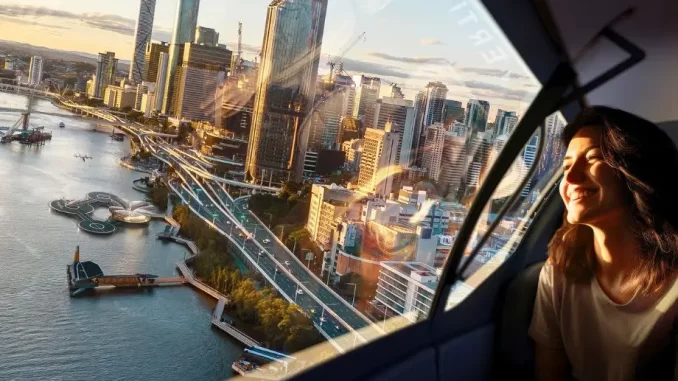
The Australian government has published its Aviation White Paper—Towards 2050 which details the regulatory steps it plans to take to integrated drones and advanced air mobility vehicles into its airspace. As part of this, the government will publish an Advanced Air Mobility (AAM) Strategy in 2024 “that provides long-term policy settings to encourage investment in the nascent sector”.
“The government will consider options to introduce new drone legislation by 2030 – related to security, privacy and other non‑safety matters – to give law enforcement and other agencies the powers they need to protect people and infrastructure,” says the text of the white paper. “The government will continue to work with state, territory and local governments to encourage increased national consistency in regulatory arrangements and enforcement.
“The government has made financing available to the aviation technology and manufacturing sector under the AD15 billion National Reconstruction Fund. Work by CASA to increase the harmonisation of Australian regulations with those in overseas markets will support Australian aviation technology businesses to introduce new products with less duplication in approval processes.
The Australian Government will incrementally put in place airspace arrangements that allow for the increased use of drones and other new aviation technologies and “will release a whole-of-government plan for air traffic management of commercial drones and other uncrewed aircraft in 2024. The Uncrewed Aircraft System Traffic Management Action Plan will outline steps the Australian Government will take to enable new types of air traffic management systems in Australia.
“Stage 2 is to provide guidance to CASA in 2024 on the Australian Government’s expectations for airspace administration. The Australian Government will produce a new Australian Airspace Policy Statement to replace the policy statement that came into effect in 2021. The new policy statement will give clear direction to CASA on the Australian Government’s priorities for airspace management, including in relation to drones and other new technologies.
“Stage 3 is for CASA to prepare a new framework for Australian airspace in 2026. The Australian Future Airspace Framework will describe how classes of airspace will be implemented and administered across Australia.
“Stage 4 is to update relevant airspace legislation by 2030. These changes will give government agencies the powers they need to regulate airspace use safely as new types of aviation technology increasingly share the same airspace as conventional aircraft.
The Australian Government will also:
* “Improve information available to industry about funding and procurement opportunities. The Australian Government has expanded the drones.gov.au website to provide a single point of reference for the emerging aviation technologies sector to access a wide range of government funding and procurement opportunities.
* Release an Advanced Air Mobility (AAM) Strategy in 2024 that provides long-term policy settings to encourage investment in the nascent sector.
* Require that CASA update its Strategic Regulatory Roadmap for drones and AAM in 2024, outlining the safety regulator’s strategic approach to working with industry to oversee the safe rollout of these new technologies.
* Continue working with state, territory and local governments to encourage increased national consistency and collaboration in regulatory arrangements for drones, including through the drone rule digitisation project.
* Implement a new system to enable air traffic management to communicate electronically with drones and other uncrewed aircraft. Initial capabilities of the Flight Information Management System will roll out in 2025 to support the safe integration of drones into controlled airspace, with additional features added over time.
* Continue to work with industry on the introduction of Remote ID requirements for drones to improve safety and enable responsible and accountable drone use. It is expected that legislation will be introduced and a mandate will be in place by 2030, subject to a regulatory impact analysis process.
* Introduce new legislation by 2030 to protect Australian communities, infrastructure and businesses from security risks of drones and AAM.
* Consult on regulatory amendments to manage noise impacts from AAM aircraft on communities.
* Work with stakeholders to develop AAM infrastructure planning guidance to support the introduction of AAM.
* These initiatives will complement the government’s support to the sector through the AD30 million Emerging Aviation Technology Partnerships program and financing (including debt and equity) available for investment through the AD15 billion National Reconstruction Fund, which may include investment in aviation technology commercialisation.
For more information
https://www.infrastructure.gov.au/department/media/publications/aviation-white-paper-towards-2050
(Image:Skyportz)

